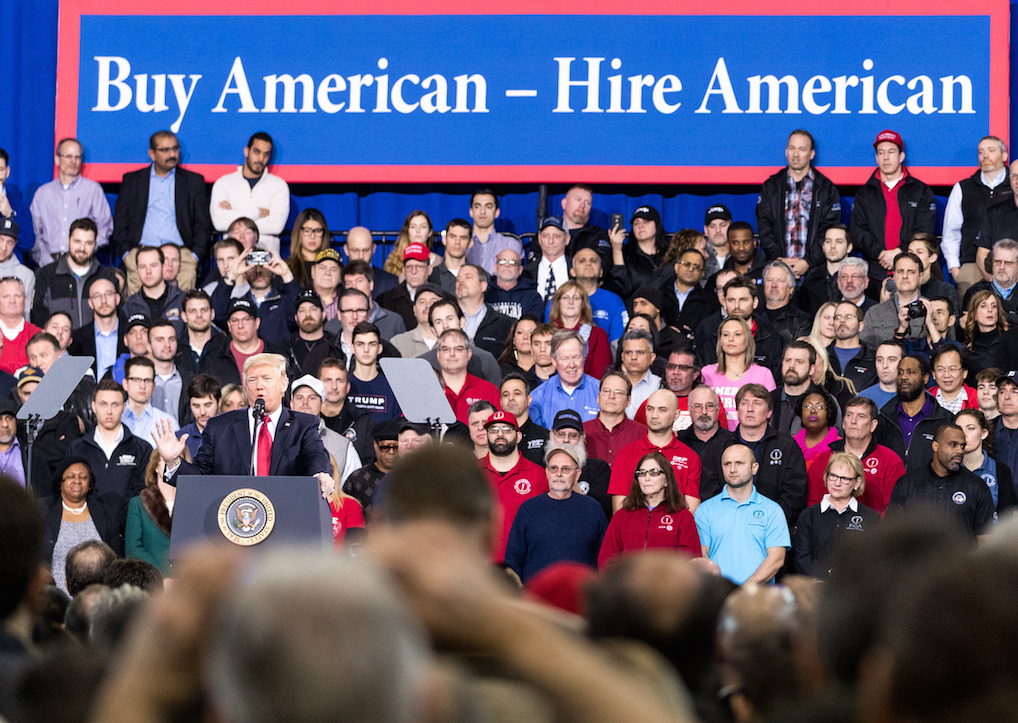The 25 per cent U.S. tariffs on $34 billion of Chinese imports promised by Donald Trump entered into force last week, with another U.S. tariff action covering $16 billion of Chinese goods to be applied in two weeks’ time.
These aggressive protectionist measures were immediately met with retaliatory 25 per cent tariffs imposed by China on $34 billion worth of U.S. imports.
Not happy with the Chinese tit-for-tat response, Trump has menaced further action: 10 per cent U.S. protectionist tariffs on additional Chinese imports worth $200 billion, followed by another round of tariffs on a further $300 billion of goods.
Such an escalation of the trade war would cover all U.S. imports from China.
Since the U.S. does not seem to have what trade diplomats describe as “off-ramp” or exit strategy in mind, a lot of governments, in China foremost, are puzzled over what to expect next.
Prior to the establishment of the World Trade Organization (WTO) in 1995, for a period of about 20 years — and especially under President Reagan — the U.S. had wielded its Section 301 protectionist legislation to enforce “America First” views. This 301 law was described by Chad P. Bown of the U.S. Peterson Institute as giving the U.S. the right to police and prosecute trade infractions by other nations, and then act as judge and jury over its trading partners by determining guilt and punishment.
With the establishment of the WTO, the U.S. achieved its goal of creating a judicial trade dispute mechanism protecting and furthering American corporate interests in international trade, and Article 301 actions all but disappeared — until the high-handed legislation was pulled out, dusted off and used to justify action against China.
The Chinese economy (real GDP per capita) has been growing at seven per cent per year since 1982. Though today barely one-fourth the size of the U.S. economy in per capita GDP, as Martin Feldstein points out, it is 18 times larger than when it initiated economic reforms 36 years ago. As a result, about 800 million Chinese citizens have been lifted out of a subsistence existence of abject poverty.
Corporate outsourcing of industrial manufacturing to China has lowered costs of production. China, not Western central bank policy, has been the main contributor to much lower inflationary pressures in the Western economies. But manufacturing job loss in advanced economies has led to its own set of social problems, notably a growth in inequality with the loss of well-paying jobs.
Donald Trump blamed these job losses on bad international trade deals, got elected doing it, and now is deploying a show of force in advance of the U.S. midterm elections.
The WTO established strict protection for investor rights and intellectual property. Both are at the heart of high-tech manufacturing. To get around the refusal of Western firms to licence and share technological innovation, China agreed to allow foreign investors to operate in China, but required them to take on Chinese partners. These joint ventures were subject to the condition that intellectual property rights be shared with Chinese firms.
Industrial strategy measures are permitted under the WTO, so long as there is no discrimination against foreign companies. The Chinese point to the average 22 per cent rate of return taken in by foreign partners as proof of the success of the joint venture strategy, and affirm, contrary to Trump, that such co-operation is voluntary.
The Trump trade team refer to the unacceptable “theft” of intellectual property. Trump White House trade adviser Peter Navarro has argued that the technology transferred to China represents a military threat to the U.S.
Not content with a manufacturing economy where control is shared with foreign corporations, China has developed a Made In China 2025 strategy that is modelled on successful German “Industry 4.0” policy. By 2025 China plans to have Chinese corporations take the leading role in 10 key high-tech sectors.
All post-1995 U.S. presidents have protected the American hegemonic position in the world economy, and for Henry Kissinger among others, China has emerged as the first genuine rival to U.S. authority on the world stage.
However, the Trump trade war with China is more about putting America First than it is about China.
By defending the U.S. domestic market against foreign exports — including those from American-owned companies operating abroad — Donald Trump has resurrected the Fortress America idea. This isolationist view was common in U.S. history before the destruction of the U.S. fleet in Pearl Harbour silenced its proponents and President Roosevelt declared war on Japan.
The Chinese trade war and the trade war over steel and aluminium with Canada, Mexico, and the EU (as well as China), and the upcoming action against automotive imports from these same countries are all about Trump making America “great” by turning away from prior engagements with the world.
As an isolationist, Trump pursues trade wars in order to repatriate overseas American production to the U.S. and give U.S.-based producers advantages over foreign producers of whatever nationality.
Duncan Cameron is president emeritus of rabble.ca and writes a weekly column on politics and current affairs.





